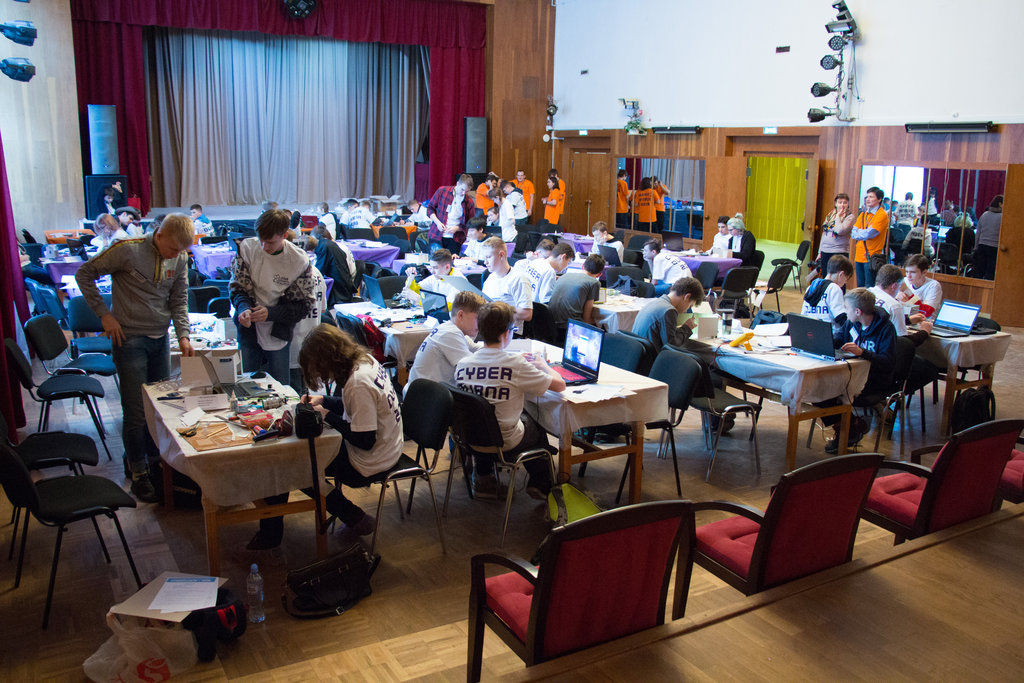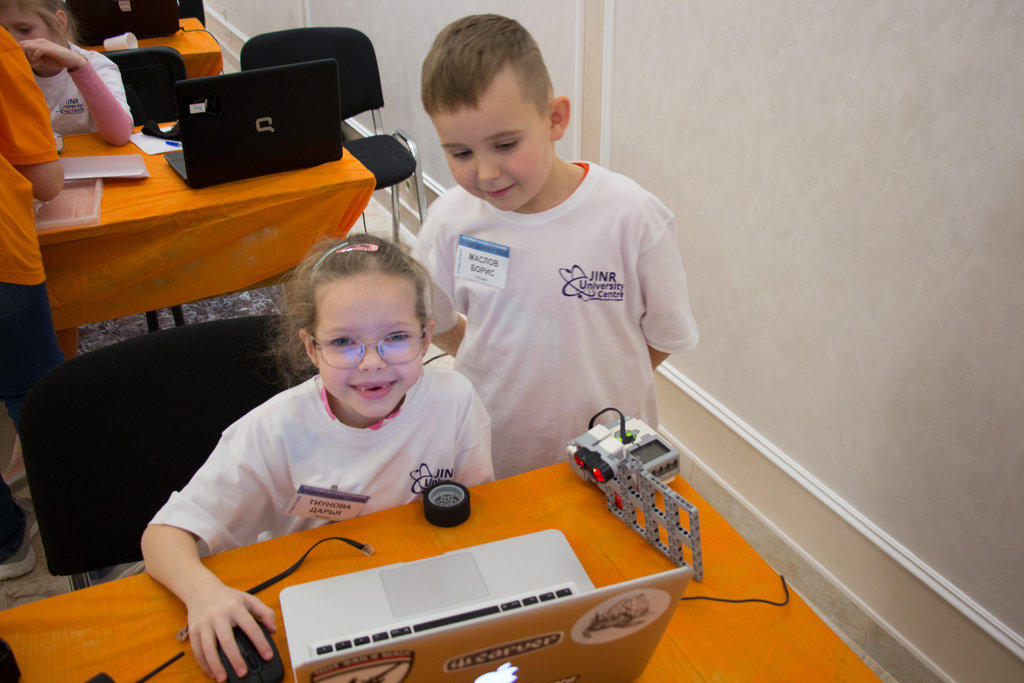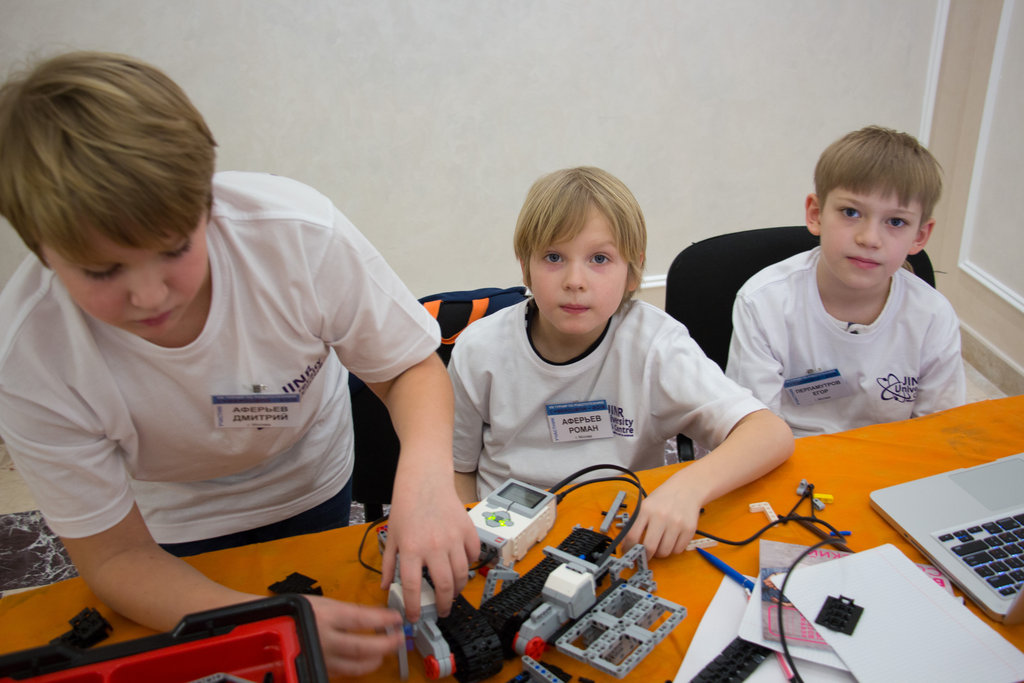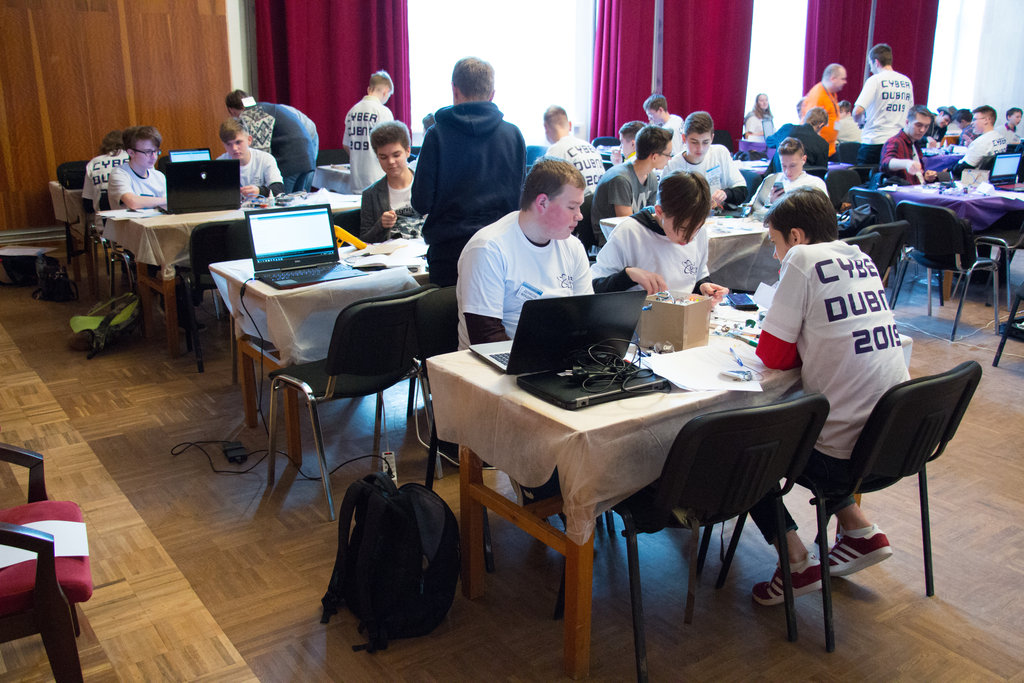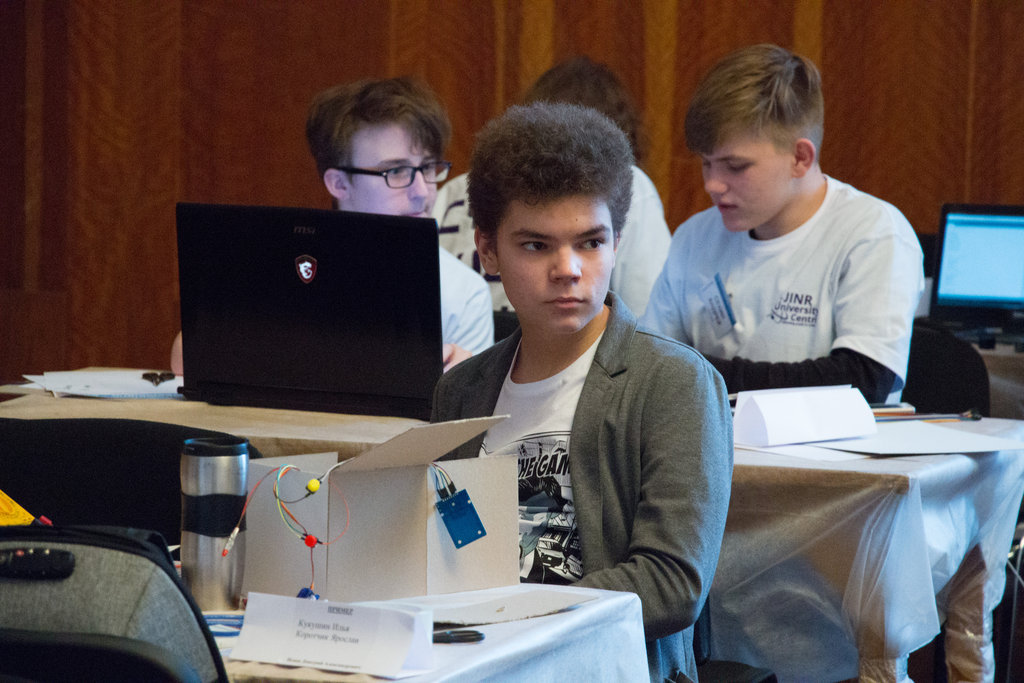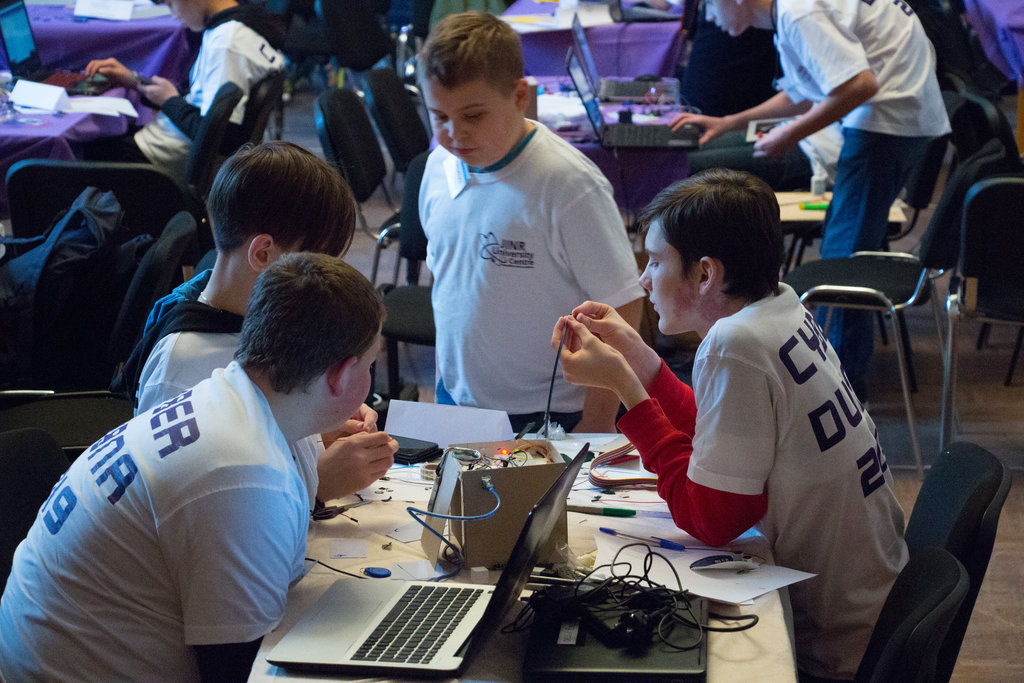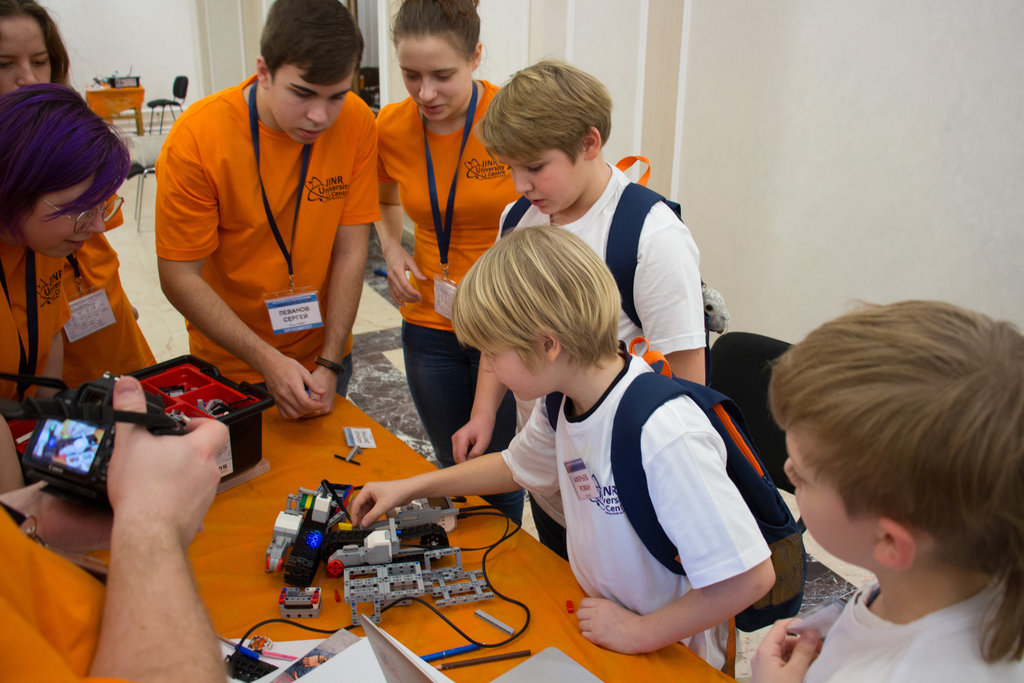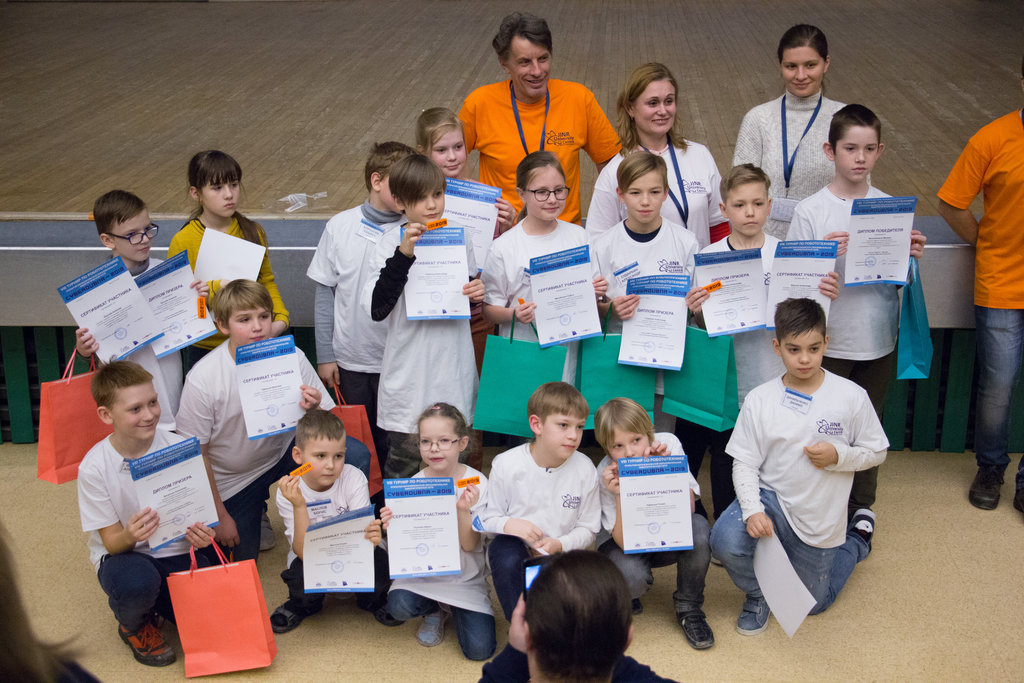CyberDubna-2019
Education, 13 February 2019
On 9 – 10 February 2019, the VIII Open Robotics Tournament of the Upper-Volga Educational Cyber Network “CyberDubna-2019” was held in the JINR Cultural Centre “Mir” (Dubna). The Arduino and Lego Mindstorms platforms were used in competitions. The organizers of the Tournament were the Joint Institute for Nuclear Research, the Volokitin and Shirkova International Computer School, and the Center for Information Technologies and Analytics “Remote Electronic Laboratory”.
On 9 February, more than 20 teams from different cities took part in the nomination “Robot for Life”. Each team consisted of 2-3 participants aged 8-17 years.
According to the rules of the Tournament, participants were supposed to build an automated model of a “smart” device. Each team was offered to choose one of three tasks: “Waste sorting”, “Safe”, and “Next, please!”. The participants were given a task to create a working system in the allotted time that would meet the functional requirements. The contestants were allowed to choose the physical configuration, the design of the device, and its additional features.
All teams succeeded in building their devices. However, the prize winners in their age categories were: Mikhail Fillipenkov, Moscow (age group: 1-4 grades); Artem Sazanovich, Matvey Minin, and Igor Semenov, Center for Robotics and Circuit Engineering “DLab” (age group: 5-7 grades); Artem Chepiga, Vladimir Denisov, and Ivan Baranov, Eldigino secondary school #1 (age group: 8-9 grades); Nikita Belenkov and Daniil Kotelnikov, the Dmitrov Institute of Continuing Education (age group: 10-11 grades / secondary vocational education).
More photos on the School’s website
The second day of the Tournament began with a small exhibition that featured the best works in the nomination “Robot for Life” and other exhibition items brought by participants.
In the Large Hall of the JINR Cultural Centre “Mir”, Professor V. Pavlovsky (Keldysh Institute of Applied Mathematics of RAS) gave a lecture “Advanced robots: snakebots, sailing robots-yachts and others.” At the end of the lecture, the viewers could cheer participants of the “Races on the Line” or take part in workshops on the basics of designing and programming microcontrollers. Among the participants of workshops there were not only kids and teenagers but also adults who wanted to try their hand. As part of workshops, it was proposed to assemble one or several devices: “Smart tunnel with automatic lighting”, “Car racing along the line”, “Colour sorter”, “Chess clock”.
